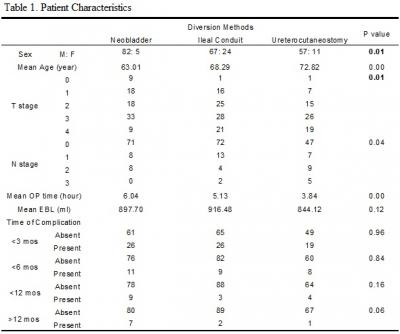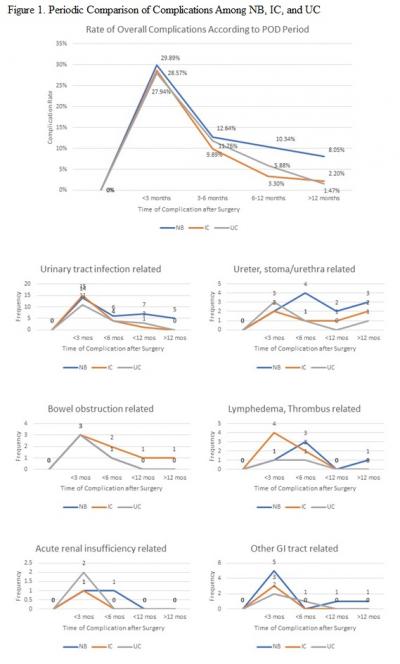|
Cancer - Bladder, Pelvis, Ureter & Others(구연)
|
(E-068)
|
|
|
근치적 방광 절제술 후 요루 전환 방법에 따른 시기별 합병증 비교 |
| 양산부산대학교 비뇨의학과 |
| 이단비, 백승룡, 송원훈, 이승수, 박성우, 남종길 |
Purpose: With multiple options for urinary diversion following radical cystectomy, complications are an important consideration during the shared decision-making process with patients being treated for bladder cancer. We sought to determine whether orthotopic neobladder reconstructions present increased complication rates after radical cystectomy.
Materials and Methods: We analyzed data on 246 patients at our institution that underwent radical cystectomy and urinary diversion for bladder cancer between 2009 and 2020 and were observed at least 6 months (mos) postoperatively. We analyze the complication evaluation according to the Clavien-Dindo classification at postoperative 3mos, 6mos, 12 mos and above 12 mos. In particular, we evaluated complications of grade 3 or higher.
Results: Table 1 shows patients characteristics according to diversion methods. Among all variables assessed in this study, age (p=0.00), T stage (p=0.01) and N stage (p = 0.04) were different. Postoperatively, complications occurred in 71 (27.7%), 28 (10.9%), 16 (6.3%) and 10 (3.9%) patients at 3mos, 6mos, 12mos and above 12mos respectively. Figure 1 shows complications according to diversion types and not associated with the risk of postoperative complications.
Conclusions: Exact comparison is difficult since the patient pool for each diversion type is different. However, we expect to see similar results when patients are carefully selected. Our results may encourage broader consideration of continent urinary diversion without concern for increased complication rates.
|
  |
|
keywords : urinary bladder neoplasm, urinary diversion, cystectomy |
|

